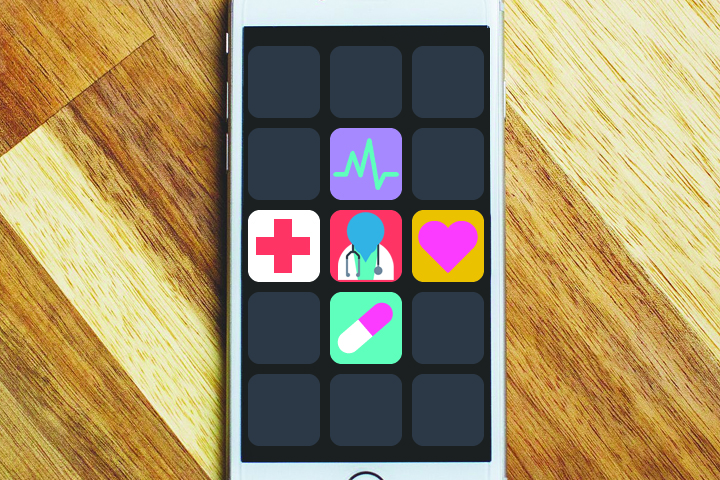The doctor will see you now: subscription health apps

With the world facing the biggest healthcare crisis this century, subscription telehealth services are being deployed at an unprecedented rate, using mobile apps to deliver medical care outside the surgery. What are the pros and cons of telehealth treatments – and who foots the bill?
With no end in sight for the disruption to treatment provisions, telehealth could become a major component of healthcare, as the adoption of Technology Enabled Care Services (TECS) is accelerated by the COVID-19 pandemic.
Immediate digital access to advice and care halts the escalation of minor ailments, while encouraging those who may otherwise avoid visiting a doctor to access treatment. For elderly, infirm and self-isolating patients, healthcare apps and devices can provide a vital route for medical care when attending a clinic or hospital may put them in greater risk; and for medical professionals, early diagnosis and swift, remote intervention can lighten an overwhelming workload.
We’ve previously explored the opportunities for subscription healthcare in the diagnosis and treatment of mild injuries and illnesses, management of chronic conditions, and mental health matters prior to the COVID pandemic.
Since then, many telehealth companies have been providing free or discounted access to a wide range of services, broadly through three key delivery portals: apps, wearable and home devices, and teleconferencing. How has this corner of the market, at the convergence of subscriptions and telehealth, responded to the new healthcare landscape? In this first part of a three-part series, we explore the market for subscription healthcare apps.
Over the last few years, some 300,000 healthcare apps have been developed, ranging from non-specialised apps such as fitness trackers to prescription-only apps as part of a course of professionally administered treatment.
Many telehealth apps offer subscription and annual plans for access; since the COVID-19 pandemic, some providers have offered services for free. Increasingly, these companies are partnering with public health bodies and insurance providers to offer access to patients as a key component of their treatment cycle.
The UK’s NHS, who first began prescribing health apps in 2016, now hosts a library of paid and free apps, with others offered on a freemium basis or free via referral from a medical practitioner. Local trusts and Clinical Commissioning Groups may also obtain new apps from NHS Digital’s central procurement database, or even commission their own.
However, three apps were removed from the NHS library in 2018 for charging users for booking private appointments, and despite efforts to control what apps patients make use of, many apps of questionable or no efficacy remain on app stores, hence the perceived need to curate what apps patients make use of.
As well as apps for medical treatment, apps for mental health are also available, and have seen increased traffic across the board; from Calm (the global leader for downloads), Simple Habit and Breethe – all of which offer free and subscription-based accounts – to cognitive behavioural therapy apps such as CBT app BlueIce for managing depression and self-harm, to reSET for the treatment of opioid addiction in the US.
Between January and April, subscription-based meditation apps saw a 24.2% growth in downloads as the pandemic took hold, with professionals working in the healthcare sector given free access to apps such as Sleepio and Headspace Plus.
Beyond providing healthcare access, apps such as Lantum are transforming how the NHS handles its staffing crisis by making it easier to fill temporary vacancies at over 2,000 healthcare organisations with local practitioners.
In May, Germany introduced a Digital Healthcare Act, allowing patients to be given access to certain subscription health apps by prescription. Under the new law, 73 million German citizens – approximately 90% of the population – are eligible through state-funded health insurance. Other provisions of the Act include the digitisation of patient records for improved access, fast-tracking of medical apps to market and permitting insurance companies to provide venture capital to digital health companies.
Even the United States, despite its prohibitively expensive treatments and barriers to access, is recognising the value of telehealth, with the Centers for Medicare & Medicaid Services beginning to include healthcare apps as part of insurance packages – in no small part thanks to the $200 million for hospitals and healthcare providers to shore up their digital infrastructure included in the $2 trillion COVID stimulus bill passed by the US Congress in March.
However, the myriad insurance policies and state laws means that payments for these services have not always been made on time, and whether insurance providers will continue to cover telehealth services post-pandemic remains to be seen, despite the efforts of many in the US government to enshrine the coverage in law.
A recent study by The Lancet into the efficacy of mobile health apps argued that though they have the potential to mitigate the pandemic, issues such as speed to market, quality assurance and data governance can create barriers to adoption. Above all, though, costs to access is the major deciding factor in making use of these apps. Should subscriptions to such services be covered by healthcare providers, or picked up by the patient?
The COVID pandemic is proving to be fertile ground for deployment and testing of new telehealth apps, addressing the need for a rapid replacement of in-person diagnosis. However, with the health of vulnerable individuals on the line, user safety and quality assurance cannot fly out the window in the rush to market.
Look out for the next blog post in our series, where we will explore wearable and home device healthcare subscription services.
